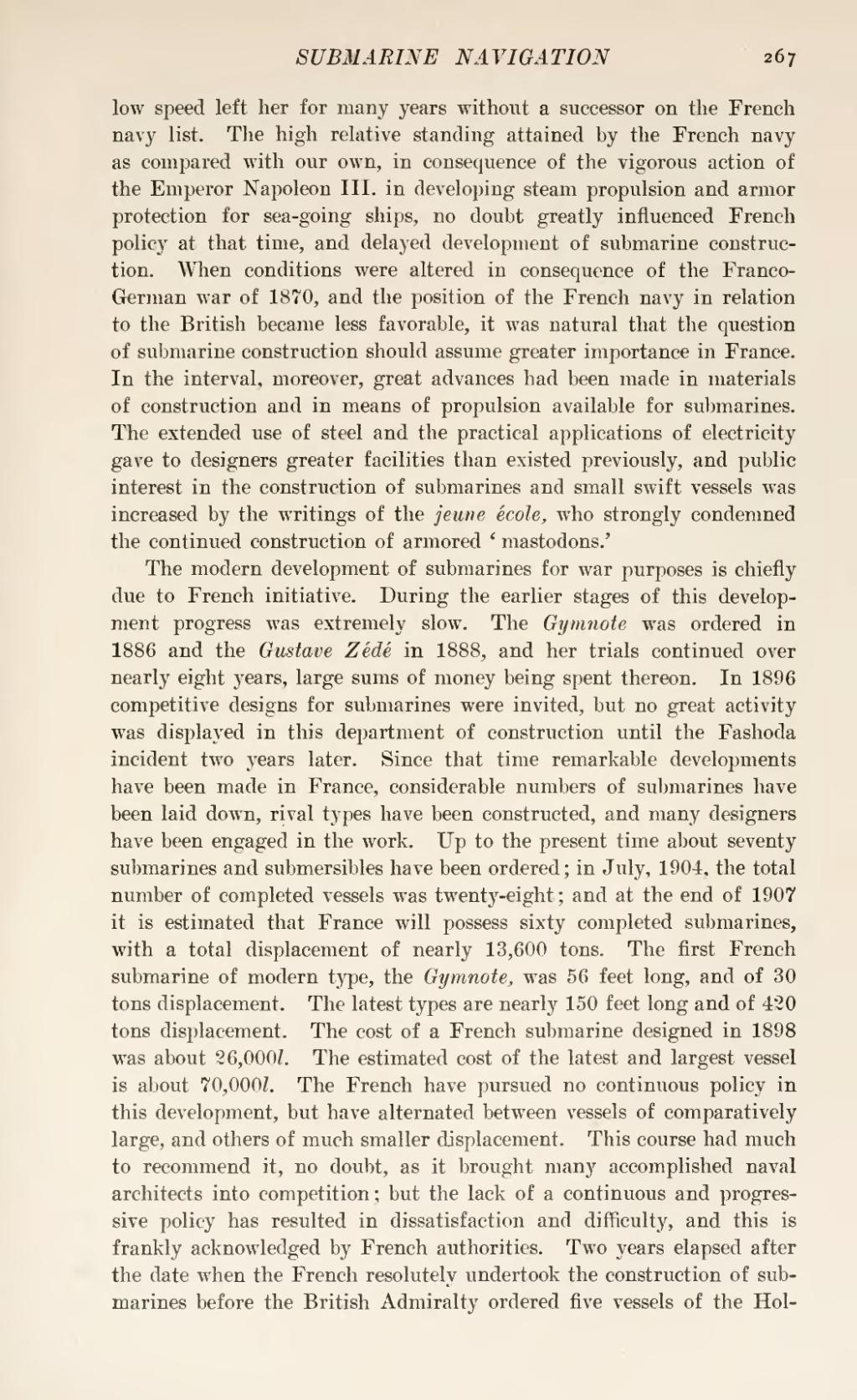low speed left her for many years without a successor on the French navy list. The high relative standing attained by the French navy as compared with our own, in consequence of the vigorous action of the Emperor Napoleon III. in developing steam propulsion and armor protection for sea-going ships, no doubt greatly influenced French policy at that time, and delayed development of submarine construction. When conditions were altered in consequence of the Franco-German war of 1870, and the position of the French navy in relation to the British became less favorable, it was natural that the question of submarine construction should assume greater importance in France. In the interval, moreover, great advances had been made in materials of construction and in means of propulsion available for submarines. The extended use of steel and the practical applications of electricity gave to designers greater facilities than existed previously, and public interest in the construction of submarines and small swift vessels was increased by the writings of the jeune école, who strongly condemned the continued construction of armored 'mastodons.'
The modern development of submarines for war purposes is chiefly due to French initiative. During the earlier stages of this development progress was extremely slow. The Gymnote was ordered in 1886 and the Gustave Zédé in 1888, and her trials continued over nearly eight years, large sums of money being spent thereon. In 1896 competitive designs for submarines were invited, but no great activity was displayed in this department of construction until the Fashoda incident two years later. Since that time remarkable developments have been made in France, considerable numbers of submarines have been laid down, rival types have been constructed, and many designers have been engaged in the work. Up to the present time about seventy submarines and submersibles have been ordered; in July, 1904, the total number of completed vessels was twenty-eight; and at the end of 1907 it is estimated that France will possess sixty completed submarines, with a total displacement of nearly 13,600 tons. The first French submarine of modern type, the Gymnote, was 56 feet long, and of 30 tons displacement. The latest types are nearly 150 feet long and of 420 tons displacement. The cost of a French submarine designed in 1898 was about 26,000l. The estimated cost of the latest and largest vessel is about 70,000l. The French have pursued no continuous policy in this development, but have alternated between vessels of comparatively large, and others of much smaller displacement. This course had much to recommend it, no doubt, as it brought many accomplished naval architects into competition; but the lack of a continuous and progressive policy has resulted in dissatisfaction and difficulty, and this is frankly acknowledged by French authorities. Two years elapsed after the date when the French resolutely undertook the construction of submarines before the British Admiralty ordered five vessels of the Hol-
